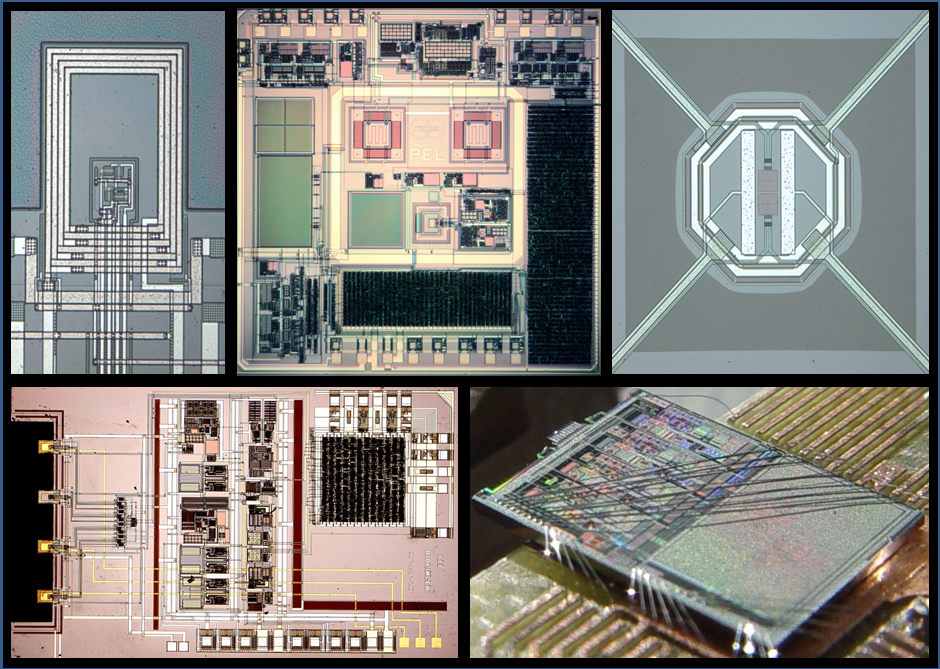PEL Information
The Physical Electronics Laboratory (PEL) was founded in 1988 by Prof. Henry Baltes and formed part of the Institute of Quantum Electronics in the Department of Physics of ETH Zurich.

Research at PEL has been targeted to developing Complementary Metal Oxide Semiconductor (external pageCMOScall_made)-based, integrated microtransducers (cantilevers, thermopiles, electrodes, infrared & ultrasound sensors) and complex microsystems in collaboration with integrated-circuit (external pageICcall_made) manufacturers and users.
The research activities included device physics, the development of post-CMOS fabrication technology and packaging methods, as well as devising analog and digital circuitry units (signal conditioning and processing circuits) needed for co-integration with the microtransducers. Several types of complex, integrated Micro Electro Mechanical Systems (external pageMEMScall_made) have been developed: CMOS-based physical, chemical and biosensor systems.
2004 – Prof. Henry Baltes was assigned to setting up the new Department Biosystems Science and Engineering (D-BSSE) of ETH Zurich in Basel, and Prof. Andreas Hierlemann became the head of PEL.
2006 – Henry Baltes became Professor Emeritus.
2008 – Andreas Hierlemann was appointed Full Professor at the Department BSSE of ETH Zurich in Basel, and the Physical Electronics Laboratory ceased to exist. The people, the research and the equipment of PEL were transferred to the new laboratory, the Bio Engineering Laboratory (BEL), in Basel.

